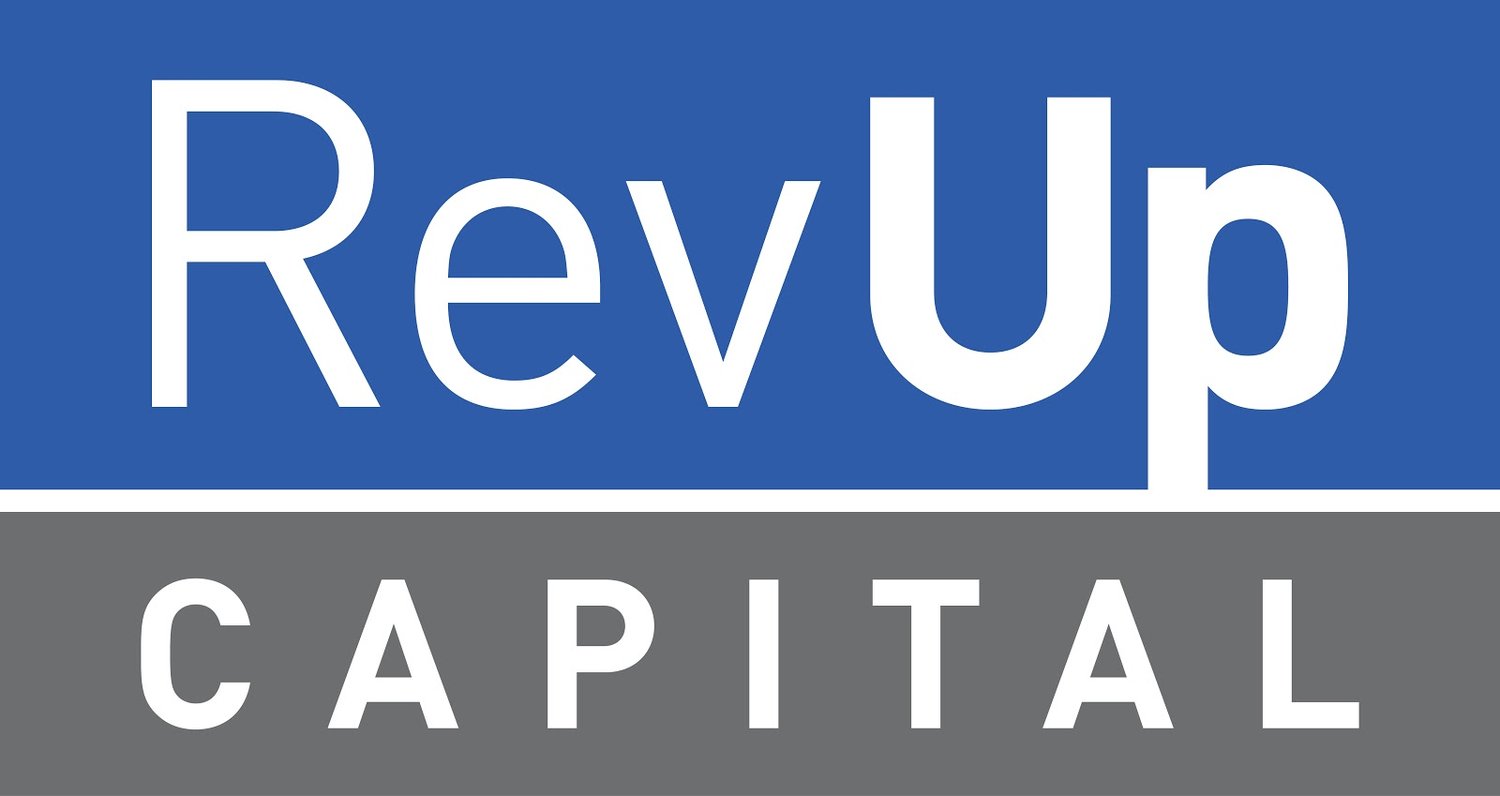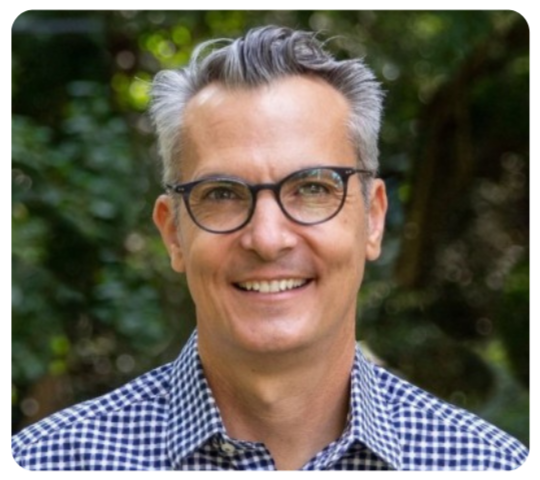Behind the Curtain: A Conversation with Paolo DiVincenzo
Engaged investors (LPs) bring so much more to the table than cash. At RevUp, our LPs form an expansive network of connectors, experts, and operators who help our team and our founders find success…every. single. day. They are also superstars in their own right, doing work that embodies the spirit of excellence, grit, and grace that underscores why we created RevUp in the first place!
So glad to showcase a few of these amazing contributors. And no one better to kick things off than Paolo DiVincenzo, CEO of Inorganic, to talk about what motivates him, the lessons he’s carried from building and exiting multiple companies, and how founders should be thinking about acquisition strategy.
As the CEO of Inorganic, an acquisition platform, Paolo has helped founders scale and exit with intention. A serial founder turned investor, he brings a deep empathy for the entrepreneurial journey and a thoughtful approach to what growth looks like beyond the early stage.
Interview with Paolo DiVincenzo
When evaluating early-stage companies for their acquisition potential, what factors or founder qualities stand out most?
Three factors stand out:
The company offers capabilities a bigger company can use. It sounds simple, but at the end of the day, acquirers want capabilities they can leverage into new revenue, markets, or advantages.
Those capabilities are hard to replicate. There’s always a build-vs-buy calculation behind strategic acquisitions. A harder build makes the buy case stronger.
Founder expectations are grounded in reality. In my experience, the biggest deal killer is a founder expecting too much. Acquisitions are risky, and founders who understand the risk acquirers are taking tend to get better outcomes. Founders who resist common risk-mitigation tools like transition periods, equity consideration, or earn-outs have a harder time.
Hindsight is 20/20. What’s one piece of advice you’d like to go back and give yourself?
I’ve missed a couple of good opportunities by being too hung up on the distinction between products and services. I used to think services were something to avoid. Too messy, too hard to scale. But I’ve learned that the line is blurry. Product companies often include services. And some companies start as services and move towards product, or the other way around. The product/service label doesn’t say nearly as much about a business’s future as I once thought.
You’ve built and exited several companies, including ServerBid and Arcametrics. What were the most critical factors that made those exits successful?
Arcametrics and ServerBid were two very different exits. Arcametrics needed an exit, so we went looking for one. ServerBid didn’t; we were ramping nicely and the exit came to us. But both companies exited to current partners, and I think that was key. When a partner already knows and uses your product, there’s less friction. Whether you are looking to sell or just keeping the door open, mid-market and enterprise partners are your best bet. Build your ecosystem early.
You are especially adept at helping companies identify strategic acquirers that may not seem obvious at the onset. What are some common misconceptions people often have about the acquisition process?
Misconception 1: There’s a standard for strategic valuation.
Founders ask about “fair” ARR or EBITDA multiples. Those numbers might come up in negotiation, but they are not how strategic buyers value early-stage companies. Strategic acquirers assess value based on how they’ll use your capabilities, and the opportunity cost in building them on their own. The better you understand their use case, the better you’ll be at pricing your asset (yet another reason why partners are often the best buyers).
Misconception 2: You need a fully built-out presentation to get interest.
Brokers often spend weeks building a glossy company/industry overview. In my experience, strategic buyers just need a few high-level numbers, a link to the website, and a conversation with the founders. If they see a fit, they’ll go to the data room next and will expect to see clean financials and important KPIs. If you’re going to invest time anywhere, do it there.
What’s one question we didn’t ask that you wish we did?
You asked about exits, but exits are just one path to good returns. One of my best ventures was a holding company that paid a solid dividend for eight years. I did eventually sell it, but most of the return came from those dividends. It wasn’t flashy, but it was consistent and very much inline with RevUp’s thesis. There are lots of ways to build a good business.
What initially motivated you to become an LP with RevUp? Still feeling it?
As an investor, I tend to stick with models I understand, that don’t depend on rare events. So the classic Silicon Valley model (bet on 30 companies and hope one hits) isn’t for me. I like that RevUp focuses on fundamentals: revenue, profit, growth. It’s a model that prioritizes more predictable returns. Whatever I sacrifice in potential for asymmetric upside, I gain in peace of mind.
Conversations like these remind us that RevUp’s community is built on more than capital. It’s built by people who believe deeply in founders and the power of sustainable growth. Paolo brings a unique perspective shaped by years of experience, curiosity, and conviction, and we’re proud to have him as part of the RevUp family. His stories reflect what makes our LP network so special: a shared commitment to helping companies grow on their own terms.
———
More About Paolo DiVincenzo
Paolo has owned and managed Internet-related businesses since the late 1990s. He has spearheaded several successful exits. After exiting iPlace, which sold for $150M while Paolo was head of Product and Marketing, Paolo started a holding company that acquired, ran, and sold numerous ecommerce companies 2004-2011. Paolo was recently CEO of ServerBid, which he sold to Consumable, Inc., and Arcametrics, which he sold to MediaMath. He currently runs Inorganic, a platform to identify strategic acquirers, and OpsAssembly, a collective of operators that helps startups overcome growth hurdles. Paolo has an MBA from University of Chicago and a BA from University of Virginia.
More About RevUp Capital
RevUp Capital invests in B2B and B2C companies that are revenue-driven and ready to double down on growth. We deploy cash and capacity to help companies grow from $1-3M to $10-30M, quickly and efficiently, using a revenue-based model. Companies enter our portfolio with $500K-$3M in revenue, a strong growth rate, and a team that’s ready to scale. Our typical investment range is $300K-$500K.
To learn more about RevUp and our most recent fund, visit https://www.revupfund.com/blog/athena-growth-fund-2025
And if the idea of expanding the toolkit for early stage investing sounds good to you, check out a recent recording that Melissa produced on the economic upsides of investing beyond unicorns.
Learn More at www.revupfund.com

